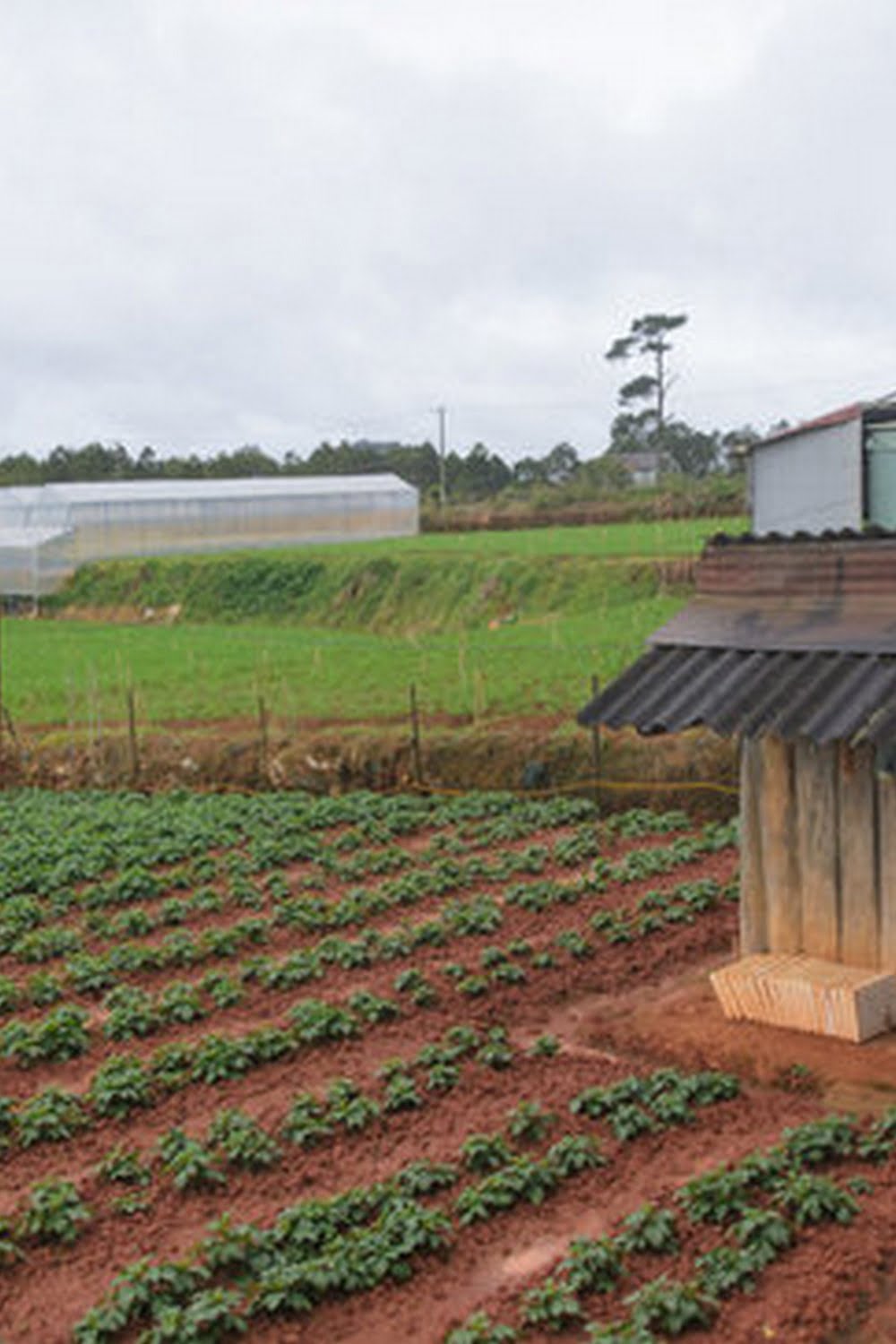Raised beds for vegetable gardens have become increasingly popular among gardeners of all experience levels. The use of raised beds offers numerous advantages, including improved soil drainage, reduced weed growth, and better accessibility for planting and maintenance. In this article, we will explore the concept of raised beds for vegetable gardens and delve into their various benefits.
When it comes to designing a productive and aesthetically pleasing vegetable garden, raised beds can provide an ideal solution. By raising the planting area above ground level, these beds allow gardeners to create optimal growing conditions for their vegetables. Whether you are limited on space or looking to improve your gardening experience, raised beds offer a versatile and effective option for cultivating a bountiful vegetable harvest.
In the following sections, we will discuss the different materials that can be used to construct raised beds, offer design tips for creating a functional and visually appealing garden layout, provide guidance on soil mixtures and suitable vegetables for raised bed gardening, as well as tips for watering, maintenance, pest management, and disease prevention. Additionally, we will share some inspiring success stories from gardeners who have achieved remarkable results using raised beds in their vegetable gardens.
So let’s get started on exploring the exciting world of raised bed gardening.
Benefits of Raised Beds
Raised beds for vegetable gardens offer numerous benefits that can help improve the overall success of your garden. One of the primary advantages of using raised beds is improved soil drainage. The elevation of raised beds provides better drainage, preventing waterlogged soil which can lead to root rot and other issues. Additionally, the improved drainage can also help prevent soil erosion during heavy rain, keeping your garden soil in place.
Another benefit of raised beds for vegetable gardens is reduced weed growth. When properly constructed and maintained, raised beds can help minimize weed infiltration, providing a more controlled environment for your vegetables to thrive. This not only saves time and effort in weeding but also reduces competition for nutrients and water among your plants.
Furthermore, raised beds can also provide a more ergonomic gardening experience. Due to their height and structure, raised beds can be easier on the back and knees, making it more comfortable for gardeners to plant, tend to, and harvest their crops. This can be particularly beneficial for individuals with physical limitations or disabilities, allowing them to continue gardening with ease.
| Benefit | Details |
|---|---|
| Improved Soil Drainage | Raised beds help prevent waterlogged soil |
| Reduced Weed Growth | Provides a more controlled environment for plants |
| Ergonomic Gardening Experience | Raised beds are easier on the back and knees |
Types of Materials for Raised Beds
When it comes to constructing raised beds for vegetable gardens, there are various options for the materials you can use. The choice of material will depend on factors such as durability, cost, and aesthetic appeal. Here are some popular options for constructing raised beds:
- Wood: One of the most common materials for constructing raised beds is wood. Cedar and redwood are popular choices due to their natural resistance to decay and ability to withstand moisture. Treated lumber is also an option but should be used cautiously, especially if it has been treated with chemicals that may leach into the soil.
- Metal: Galvanized steel or corrugated metal panels can be used to construct durable and long-lasting raised beds. Metal beds offer a more modern and industrial look, and they are resistant to rot and pests.
- Composite Materials: Composite materials, such as recycled plastic or composite wood, offer a low-maintenance option for building raised beds. These materials are resistant to rotting and warping, making them ideal for long-term use in the garden.
Each of these materials has its own advantages and disadvantages, so it’s important to consider your specific needs before choosing the right material for your raised beds.
Ultimately, the choice of material for your raised beds will depend on your budget, aesthetic preferences, and how long you intend to use the beds. Regardless of the material you choose, proper construction is key to ensuring that your raised bed vegetable garden thrives. Whether using wood, metal, or composite materials, secure and level construction is vital for optimal plant growth in your vegetable garden.
Design Tips
When it comes to designing and planning raised beds for a vegetable garden, there are a few key factors to consider to ensure both aesthetic appeal and functionality. One important aspect of raised bed design is the layout and dimensions of the beds.
It is essential to plan the layout in such a way that allows for easy access and maintenance. Additionally, consideration should be given to the height and width of the beds to make them comfortable to work with and visually appealing.
Another important aspect of designing raised beds for vegetable gardens is the choice of materials. Wood, metal, and composite materials are popular choices for constructing raised beds. Each material has its own pros and cons, so it is essential to research and choose the most suitable option based on factors such as durability, cost, and aesthetic appeal.
In addition to layout and materials, incorporating features such as pathways, trellises, or borders can add visual interest to the vegetable garden while also providing practical benefits such as support for climbing plants or delineation of different planting areas. By carefully considering these design elements, gardeners can create an aesthetically pleasing and functional space that maximizes the benefits of using raised beds for vegetable gardening.
| Aspect | Description |
|---|---|
| Layout | Plan for easy access and maintenance; Consider dimensions for comfort |
| Materials | Research options such as wood, metal, or composite materials; Consider durability, cost, and aesthetic appeal |
| Features | Incorporate pathways, trellises, or borders for visual interest and practical benefits |
Soil and Planting
When it comes to raised beds for vegetable gardens, the type of soil used is crucial for the success of the crops. The mixture should be loose, well-draining, and rich in organic matter to ensure healthy plant growth. One popular soil mix for raised beds is a combination of equal parts topsoil, compost, and perlite or vermiculite to improve drainage.
Best Soil Mixtures
In addition to the basic soil mix mentioned above, gardeners can also tailor their soil mixture based on the specific needs of the vegetables they plan to grow. For example, root vegetables such as carrots and radishes require a lighter, sandier soil to allow their roots to develop properly. On the other hand, leafy greens like lettuce and spinach thrive in a nutrient-rich soil with plenty of organic matter.
Types of Vegetables
While almost any vegetable can be grown in raised beds, some are especially well-suited to this method of gardening. Vegetables that do not require extensive root systems, such as tomatoes, peppers, and herbs, are excellent choices for raised bed gardens. Additionally, vine plants like cucumbers and squash can be trained to grow vertically in raised beds, maximizing space and productivity.
By carefully choosing the right soil mixture and selecting suitable vegetables for raised beds, gardeners can ensure bountiful harvests from their vegetable gardens while enjoying the many benefits of this innovative growing method.
Watering and Maintenance
Proper watering and maintenance are essential for ensuring the health and productivity of vegetables grown in raised beds. Implementing the right watering techniques and staying on top of maintenance tasks can result in a thriving vegetable garden that produces an abundant harvest.
Watering Techniques for Raised Beds
One of the key benefits of raised beds for vegetable gardens is improved drainage, which helps to prevent waterlogging and root rot. However, this also means that raised beds may require more frequent watering, especially during hot and dry weather.
To ensure healthy plant growth, it’s important to water raised beds thoroughly, making sure that the moisture reaches the roots of the plants. Drip irrigation systems or soaker hoses can be effective tools for delivering water directly to the soil without wasting excess water.
Maintenance Tasks for Raised Beds
Regular maintenance is crucial for keeping raised bed vegetable gardens in optimal condition. This includes tasks such as weeding, pruning, and checking for signs of pests or disease. Weeds can easily find their way into raised beds, so it’s important to stay vigilant and remove them regularly to prevent competition for nutrients and water. Additionally, maintaining a consistent layer of mulch on the soil surface can help suppress weed growth and retain moisture.
Fertilizing Raised Beds
In addition to proper watering and maintenance, fertilizing is another key aspect of caring for vegetables in raised beds. Because raised bed gardens have defined boundaries, it’s important to replenish the soil with nutrients regularly. Organic compost or well-balanced organic fertilizers can be added to raise bed soil to provide essential nutrients for healthy plant growth.
By implementing these techniques, gardeners can ensure that their raised bed vegetable gardens thrive and produce bountiful yields throughout the growing season.
Pest and Disease Management
One of the key advantages of using raised beds for vegetable gardens is the ability to better control pests and diseases that can harm your plants. Here are some tips for preventing and managing common issues:
1. Choose the right location: When planning your raised beds, try to select a location that gets plenty of sunlight and good air circulation. This can help reduce the risk of certain fungal diseases that thrive in moist, shaded areas.
2. Use proper spacing: Overcrowding plants in a raised bed can lead to increased humidity, which can create an environment favorable for disease development. Be sure to follow spacing recommendations for each type of vegetable you plan to grow.
3. Rotate crops: Rotating crops from one season to another can help reduce the build-up of soil-borne diseases and pests. Consider keeping a simple crop rotation plan to ensure that you don’t plant the same type of vegetable in the same spot year after year.
4. Implement natural pest control methods: Encourage beneficial insects such as ladybugs, lacewings, and predatory wasps by planting flowers that attract them around your raised beds. You can also use physical barriers like row covers to protect your plants from pests.
5. Regularly inspect your plants: Keep an eye on your vegetables for any signs of pest damage or disease and take action promptly if needed.
By following these tips, you can help prevent common pests and diseases from causing significant damage to your vegetables grown in raised beds.
Remember that every garden is different, so it’s essential to monitor your plants closely and adjust your management strategies accordingly. With proper care and attention, you’ll be able to enjoy healthy crops from your raised bed vegetable garden throughout the growing season.
Success Stories
In conclusion, raised beds for vegetable gardens have proven to be a popular and effective method for growing healthy and abundant crops. By providing improved soil drainage, reduced weed growth, and better overall control of soil quality, raised beds offer numerous benefits for gardeners. Whether constructed from wood, metal, or composite materials, the options for designing and planning raised beds are endless, allowing for both functional and aesthetically pleasing vegetable gardens.
Furthermore, when it comes to soil mixtures and suitable vegetable choices for raised beds, there is a wealth of information available to guide gardeners in making the best choices for their specific needs. Proper watering and maintenance are also key components of successful raised bed gardening, ensuring that plants receive the necessary care for optimal growth and yield. Additionally, by utilizing pest and disease management strategies, gardeners can safeguard their crops against common threats and enjoy a bountiful harvest.
Finally, success stories from experienced gardeners serve as inspiration for those considering or already using raised beds for their vegetable gardens. The firsthand accounts of thriving crops and flourishing gardens demonstrate the potential of this growing method in producing outstanding results. With proper planning, care, and attention to detail, raised beds can provide a fruitful and rewarding gardening experience for enthusiasts of all skill levels.
Frequently Asked Questions
How Deep Should a Raised Garden Bed Be for Vegetables?
The ideal depth for a raised garden bed for vegetables is at least 6-12 inches. This depth allows for good root development and proper drainage, which are crucial for healthy vegetable growth.
What Vegetables Are Best to Grow in Raised Beds?
Some of the best vegetables to grow in raised beds include tomatoes, peppers, lettuce, spinach, carrots, radishes, and herbs like basil and parsley. These vegetables thrive in the loose, well-drained soil that raised beds provide.
What Vegetables Should Not Be Grown in a Raised Bed?
While many vegetables do well in raised beds, there are some that are not recommended for this type of gardening. Tall or vining crops such as corn and full-sized watermelon may not be suitable for raised beds due to their space requirements and potential to overshadow other plants.
Additionally, large-rooted crops like potatoes may struggle to develop fully in the limited soil depth of a raised bed.

If you’re looking to get into vegetable gardening, or are just looking for some tips on how to make your current garden better, then you’ve come to the right place! My name is Ethel and I have been gardening for years. In this blog, I’m going to share with you some of my best tips on how to create a successful vegetable garden.





